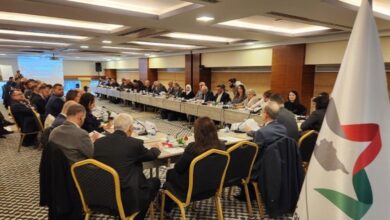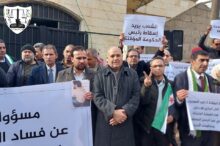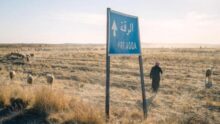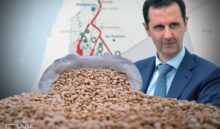Symbols and Figures of the State in Syria (12): Nazim al-Kudsi
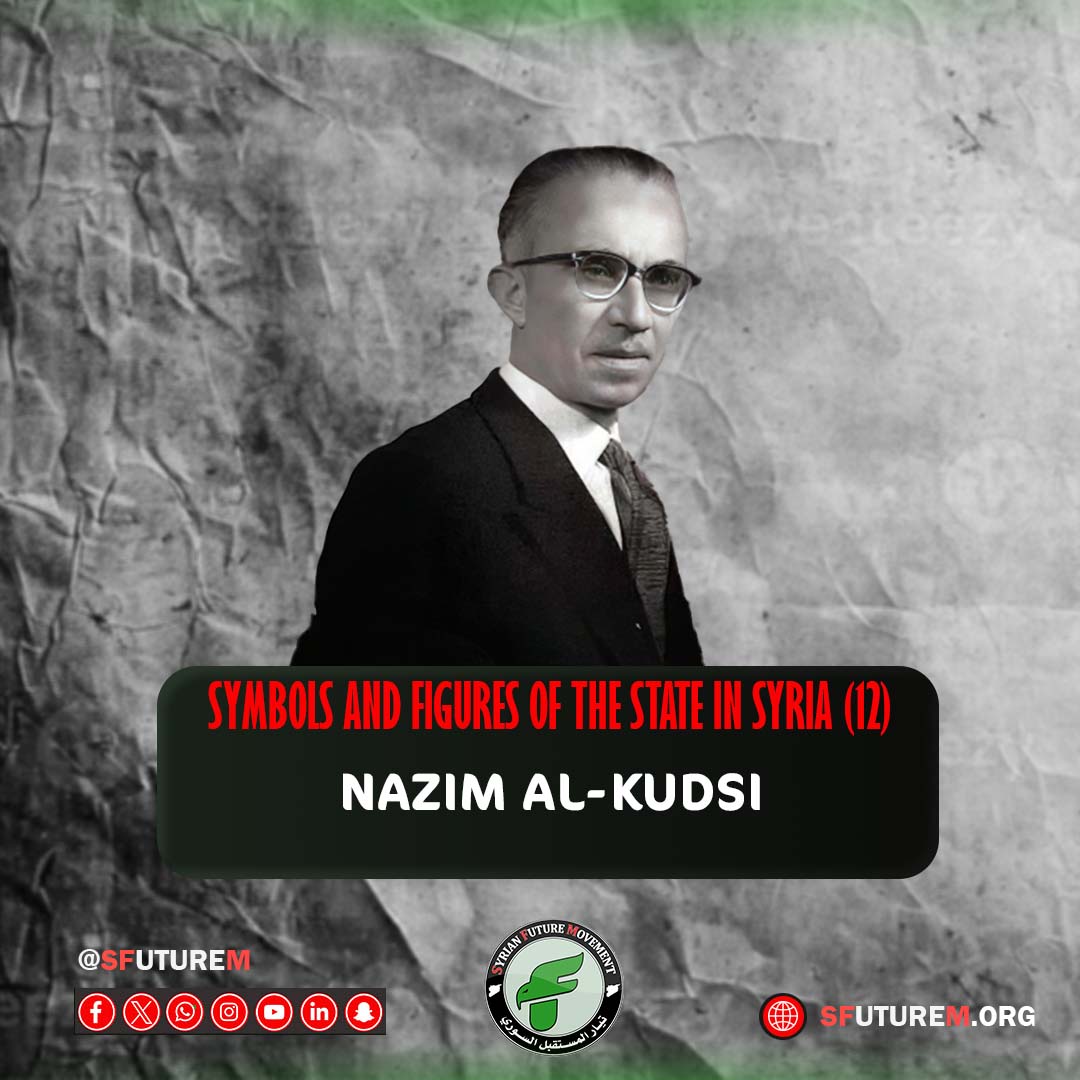
- He was born in 1905 in the city of Aleppo.
- He studied law in Damascus, then at the American University of Beirut, and later at the University of Geneva.
- In 1935, he joined the National Bloc, which was a political movement aiming to rid the country of French control through political dialogue rather than armed resistance.
- Later, he disagreed with the leadership of the National Bloc, which failed to prevent the annexation of the Sanjak of Alexandretta to Turkey in 1939, prompting him to leave the Bloc.
- Afterward, he decided to form an alliance of intellectuals in Aleppo around the prominent lawyer Rushdi Al-Kikhia.
- Both were nominated for parliament in the 1943 elections.
- He was appointed Syria’s first ambassador to the United States, where he built the Syrian Embassy in Washington from scratch and presented his credentials to President Franklin Roosevelt on March 19, 1945.
- In 1947, Al-Qudsi, along with Al-Kikhia, founded the People’s Party, which became the strongest opposition to the National Party. The founders of the People’s Party were primarily Aleppo’s elites, who were loyal to unity with the Hashemites in Iraq, democratic transformation, and developing relations with the West.
- He won in the elections of 1943, 1947, 1949, and 1962 as a candidate for his party.
- He voted against naming Al-Quwatli as President of the Republic, but Al-Quwatli, backed by the National Party, was re-elected.
- After Al-Quwatli’s government was overthrown in a military coup on March 29, 1949, the new president, Hosni Al-Za’im, asked Nazim Al-Qudsi to form a government, but Al-Qudsi refused due to the unconstitutional manner in which Al-Za’im had come to power.
- Al-Za’im detained him and shut down the offices of the People’s Party, but he was released shortly after and placed under house arrest in his home in Aleppo.
- He strongly criticized Hosni Al-Za’im, especially when Al-Za’im sought to close the borders with Jordan and Iraq and wanted to launch a war against them, accusing them of being British agents.
- On August 14, 1949, he supported a coup led by Sami Al-Hinnawi, an old friend of the People’s Party and ally of the Hashemite family in Baghdad, which resulted in the execution of Hosni Al-Za’im.
- Al-Hinnawi formed a political committee to govern the country in the absence of a formal government and appointed Al-Qudsi as its head.
- He drafted a new constitution for Syria and became the Foreign Minister in the first government after the coup against Al-Za’im, with Hashim Al-Atassi as its head.
- He held talks with Iraq’s Crown Prince Abd al-Ilah, proposing the establishment of an immediate union between Syria and Iraq and made several trips to Baghdad for this purpose.
- He drafted an agreement calling for a federal union, maintaining two independent governments in Damascus and Baghdad, while uniting military, economic, cultural, social, and political affairs between the two countries.
- He traveled to Cairo and presented similar proposals at a meeting of the Arab League on January 1, 1951.
- To expedite the union talks, Hashim Al-Atassi, who had been recently elected, tasked Nazim Al-Qudsi with forming a government on December 24, 1949.
- The military voted against his government, and he resigned five days later, citing the lack of military officers in the government and the fact that its members were opposed to military interference in politics.
- On June 4, he formed a new, less extreme government and secured opposition approval by appointing Fawzi Selo as Minister of Defense, who was the right-hand man of Adib Al-Shishakli.
- The government lasted ten months, during which it failed to make significant progress on the union issue, leading to his resignation on March 27, 1951.
- On October 1, he was elected as the parliament’s speaker.
- On November 28, Adib Al-Shishakli seized power and detained all the People’s Party leaders, accusing them of conspiring against the republican system in Syria and attempting to replace it with a monarchy allied with Britain.
- Fawzi Selo was appointed as interim president, and Al-Qudsi was sent to Mezzeh Prison.
- He was released in January 1952 but remained under house arrest.
- He worked secretly and supported a military coup that overthrew Al-Shishakli in February 1954.
- In October 1954, he became a deputy in the first parliament after Al-Shishakli’s rule and was elected as the parliament’s speaker.
- He tried to resist the influence of Abdel Nasser, advocating the importance of alliances with the United Kingdom and the United States, while most Syrians were leaning towards the Soviet Union.
- He called for Syria to join the Baghdad Pact.
- On October 12, 1957, he resigned from his position and was replaced by the socialist Akram Al-Hourani, a supporter of Abdel Nasser.
- He voted against the union with Egypt, and when the merger to form the United Arab Republic took place, he resigned from political life and returned to Aleppo.
- He settled in Aleppo until the secession from Egypt, after which he was chosen to be Syria’s president in 1961, succeeding President Gamal Abdel Nasser.
- In 1962, he won a seat in parliament.
- He lost all his elected positions when the Ba’ath Party permanently seized power in March 1963, and he spent the rest of his life disillusioned with politicians.
- He passed away in Amman in 1998, marking the end of one of the last Syrian politicians who had witnessed its democratic era.
At the Syrian Future Movement (SFM), as we commemorate the memory of the founding statesmen of Syria, we recall one of Syria’s most influential figures and one of the iconic leaders of the first Syrian state who contributed to shaping its structure: His Excellency President Nazim Al-Qudsi, the unique leader in Syrian history to have held the three presidencies. This is part of a series we present to you, highlighting the symbols and icons of the Syrian state, with the aim of linking our contemporary revolutionary present to a strong past and historical milestones. We hope to inspire in our people the need to build and cultivate exceptional statesmen, learning from their experiences and building upon their history, to preserve the nation, safeguard its achievements, and restore Syria’s pride and glory after years of oppression, tyranny, and corruption.

